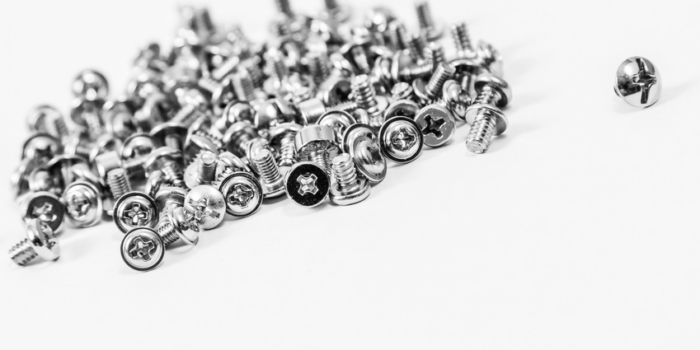Looking for an efficient method to produce external threads on a screw? Why not try thread rolling for customized micro screws or other small screws? Thread rolling for customized micro screws, or any other screw for that matter, is a highly versatile process for cold forming, which can be done on any type of ductile metal to strengthen the material.
Check out our EZ Screw Builder to build your custom screw!
Thread rolling uses hardened steel cylindrical dies to give different materials a specific shape. They penetrate a metal at an extremely high pressure to mold it into the shape of a thread. When traditional grinding and cutting is used, metal is often lost. With the use of thread rolling, however, no metal is cut away or lost. The only thing that happens to metal during this type of thread rolling process is reshaping.
Screw thread rolling can improve the strength of the metal being rolled by 30% or more versus any traditional cutting method. It’s extremely simple and doesn’t take a lot of time, so it can ultimately speed up your production cycle. Thread rolling is perfect for any industries that require safety-critical or high-tensile components. Since no metal is lost during the thread rolling process, cleanup time after production is virtually non-existent. Considering that thread rolling makes any cutting task a lot quicker, companies can easily reduce both the need for labor and cost.
As with any machining process, there are a few cons that come with thread rolling. However, these are easy fixes. For example, if your threads are full of flakes you need to make sure that your roll’s center lines are parallel to the work center line. If your rolls are out of line, you can simply put them back together to match up properly. You may also notice a mismatched helix angle. This can easily be prevented by optimizing your rolling time and not overdoing it. Once the thread has been fully formed on your machine screws, micro screws, mini screws, or customized micro screws, you need to remove it immediately.
Now that you know the basics of the thread rolling process, do you think you’re going to use this technique instead of cutting? Considering its time-saving benefits, the U.S. screw, nut, and bolt industry which employs roughly 131,949 people, has certainly made excellent use of this technique.

